Hi, I'm Jackdaw! I like to make things, and I especially like to make things out of other things.
On Making Your Own Oracle
If you're not sure where you want to start, or you don't think you want to get your cards printed, you can start with something as simple as index cards or a playing card deck. Writing the concepts you have in mind on the cards and using them will get you thinking about what kind of messages you intend your deck to deliver and if it has all the tools it needs to do so. Practice reading for yourself, for other people, even for made-up situations by laying down cards and seeing whether they're straightforward or confusing.
When I am creating actual card art on the computer, whether it's from art I've created or using copyright-free images online, I usually use Canva to create my cards. It has a reasonable amount of control and options available. In the past I've used editing programs like GIMP as well
Separate from my cards and my magpie set, I have a coin divination set made up of coins and pseudonumismatics. I can read this in either of the ways I mentioned reading the magpie set above, or by drawing coins and setting them in a spread just as I would with cards. For this I tend to choose coins and tokens that have symbols on them that seem meaningful, and there could easily be a lot of overlap between a coin set and a magpie set; I collect tokens specifically for this set, so I have a number of specific items in it that broaden my reading options, including coin versions of the tarot's major arcana.
the Empty Sky Oracle
I started making my first oracle deck back in 2012. It seemed pretty straightforward at the time, aside from the fact that I'm not much for follow-through as an artist, and I started by throwing together a bunch of images and ideas on Printer Studio and having them printed. Over time the way in which I start my projects has changed, but the basic premise stays the same for me: I have an idea, I figure out what meanings make sense in the context of that idea, and then I use the system over and over to refine it.
I've done four or five different printings of that first deck, changing out the art as I improved as an artist and as the meanings of the cards changed. I still draw on my cards with magic marker to add ideas or labels that have changed. Sometimes I start with a regular playing card deck and will label the cards with a sharpie as I think of concepts to apply.
One of these days I will have a completed version that other people will be able to use. In the meantime it is a work in progress.
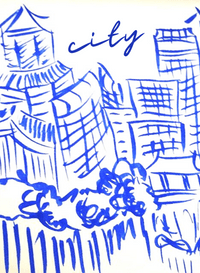

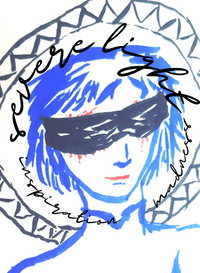
Extrarcana
Over the years I've collected and traded individual cards to see what resonates with me, and for the past year I've been putting those cards into magpie decks inspired by the Alleyman's Tarot and the community that's sprung up surrounding it. In the process, I decided to start sharing cards I was making for myself, in case other people wanted them as well.
I call these Extrarcana because they are not part of a complete system or deck of their own, at least not so far. Each booster pack is a set of 20 cards that can be used by itself or shuffled into magpie decks, alleydecks, and similar projects. They're just a little something extra.
The Original
My first Extrarcana set was comprised of oracle cards I'd aready made for my own use before encountering the idea of selling "booster packs". There are day/night and seasonal cards that are great kept aside from your deck and used when you want an answer to a timing question, or shuffled into a magpie deck to represent the qualities of each season, as well as cards for more abstract concepts like Chaos and Order, the Doors to Nowhere and Somewhere, the Intersection and the Ominous Horizon.
Words and Pages
These are cards that use the symbolism of reading and writing, and seem to particularly resonate with authors. The Blank Page speaks of new beginnings while To Be Read asks you to consider what you're putting off and the Bookstore Cat wants to know what company you are keeping.
Sins and Strange Alchemies
This booster features 20 cards with art by Jasmine Becket-Griffith referencing the seven deadly sins, the four horsemen of the apocalypse, the four stages of the alchemical great work, and rounded out with four extra cards including a Critical Success that I like to shuffle in when I'm doing readings for an unambiguous success card. These cards are made possible by the artist generously sharing much of her art in the Public Domain.
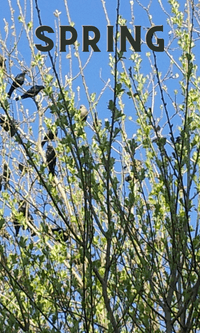
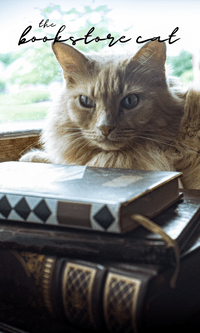
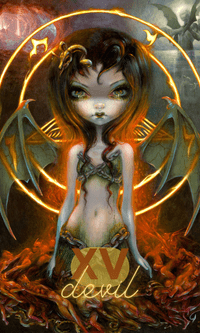
You can purchase these cards on The Gamecrafter.
Calvincard, Magpie Decks, the Alleyman and Other Mismatched Cartomancy
This is another way to get a wide variety of cards, ideas and concepts together and see what works and what doesn't. The magpie oracle has been around for some time; I've had a magpie set of charms and trinkets for throwing for several years. This is a pouch with a number of objects that seem particularly meaningful to me. I learned to read these in much the same way I learned to read the runes: reach in for a single object or a few to throw, either on their own to be read in relation to each other or on top of a card reading for additional information. Since the objects for the magpie set are chosen to have a clear meaning to begin with, these can be much easier to get up and running for reading since you don't have to learn them over time like you do with an oracle that has a more abstract set of symbols.
I don’t think I’d be able to work on the deck I’m building now, though, if I hadn’t also spent considerable time in college learning a system of divination I refer to as Calvincard (in the tradition of Calvinball, of course.) The principles behind Calvincard are simple: you use what you have to hand, you never read the same way twice, and you make the rules up as you go.
At the time I was working in a gaming store, and so a wide variety of cards from a wide variety of CCGs passed through my possession. I’m pretty sure it was several years before I even read with the same deck twice, though I have fewer cards pass through my hands now and the deck I still occasionally pull out hasn’t changed in a while. If you had a bunch of divination cards like tarot, or even collectible trading cards, you could just as easily use them for Calvincard. The rules still hold, though.
I never (knowingly) repeat a layout when doing a Calvincard reading. The cards, their locations and the meanings of those locations are determined by the reading itself. I announce what each card is before I pull it. Then I interpret each card based on the location in the reading, the symbolism of the card, the game mechanic, or something else altogether.
It worked surprisingly well, but it’s a serious exercise in learning how to tell what cards mean, not just memorizing a book. How do you build your own cartomancy deck? It’s a process that largely consists of intuition. Calvincard taught me to listen to the meanings of cards in context, which has been invaluable in learning to read properly with a deck that I'm in the process of creating.
More resources for DIY deck creation:
- Journal Notes on a Deck Production Process
- How to Self-Publish Your Tarot or Oracle Deck.
- Useful Resources for Deck Creators
- How to Self Publish Your Own Deck
- How to Create an Oracle Deck & Have it Printed
- The Oracle Creator
Benebell Wen, creator of the Spirit Keeper's Tarot, has posted about her deck creation and production process multiple times, including in Journal Notes on a Deck Production Process, and offers a course in How to Self-Publish Your Tarot or Oracle Deck.
Kimberly Tsan has a good collection of her thoughts and resources here.
The oldest resource I've found is Arnell Ando's site, which has been updated regularly since 1997.
I haven't used MakePlayingCards but Capricorn Moon Goddess has a great tutorial about them.
Published by Liminal 11, this is about the process of designing and printing a deck.
Other concepts that have influenced my oracle-making include:
- the Journey Deck
- the Alleyman's Tarot
- Bones, Shells and Curios
- Playing Tarot Solitaire
There are also tons of excellent YouTube videos about creating your own deck. Some are about making a deck by collage onto cards, so that only a single unique copy exists, and some are about the process of designing the art for a deck, while still others are about the process of printing or selling or kickstarting a deck. I recommend browsing YouTube if you're interested in seeing a lot of different takes on the deck creation process and what options you have for it.
Where To Find More Cards
Cards by folks I met in the Alley
- The Alleyfolk: boosters and a tarot-sized Lenormand designed by fans of the Alleyman Tarot.
- Cryptica Erratica: sells a variety of tarot boosters alongside his own upcoming deck.
- Figuratively Speaking: is a complete deck along with several themed boosters.
- R Thomas Allwin: in addition to comic-book art, he has also designed several sets of tarot boosters.
- The Ragamancers: the Gooseberry Set is ten cards featuring vintage art.
- Where To Find Tarot Boosters: Ragamancers also maintain their own list of boosters
- The Carpenter's Wife: cards made with encouragement from the Alley facebook group.
- Dactyl Cartomancy: tarot and oracle decks and expansions.
- Quantum Cauldron: offers a magpie booster and a zodiac booster.
- Magpie Zines: sells zines about tarot cards that come with tarot cards!
- Pazzol Decks: Recently kickstarted "Arcanaless" booster deck.
Get yourself a whole bunch of cards
- Hester's Occult: an ebay shop that sells mixed packs of cards as well as vintage decks.
- Cassie Lou's Distractions: sells lots of mixed tarot cards.
- Pika's Crafty Destash: sells lots of mixed tarot cards and complete magpie decks.
- Ink Witch Extension: ten additional cards designed for the Ink Witch Tarot.
- Bitchy Witch Expansion: this oracle deck expansion has some great attitude to bring to a deck.